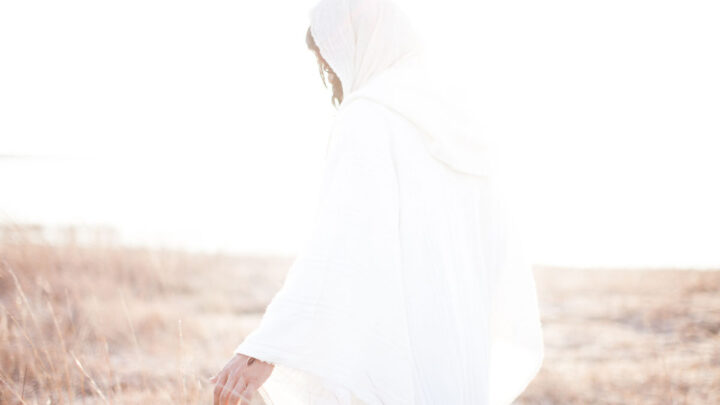Growing up, my understanding of God was shaped less by images and more by mystery. When I was a child, I asked my mother—a devout charismatic Christian with a rich tapestry of mystical experiences—what Jesus looked like. She told me of a vision she once had during prayer, in which Jesus appeared before her. His face, she said, was shining with light, so bright she could not see any features. His body was clothed in a white robe, radiant and holy. Though she could not see his face, she knew without question that it was Jesus. That story shaped me profoundly. Since then, I’ve never associated any painting or icon with the real Jesus. Instead, I’ve lived with the deep conviction that God is not to be captured by image but encountered through presence.
Even so, I’ve continued to search for a way to relate to God—something that goes beyond mystery into relationship. Scripture often describes God as Father, but I grew up without a father or father figure. That absence made it hard to imagine what a father is, let alone God as one. Yet, paradoxically, that void also became an opening. Without a human father to compare or confuse with God, I found myself more able to receive Jesus’ teaching about God more clearly. I didn’t need to unlearn a flawed image of a father to understand God’s love. I could start fresh, with Jesus, who shows me what God is like.
I was reminded of this journey as I read a reflection by a Boston College student who recalled being asked to bring an “image of God” to a retreat formation meeting. [1] Expecting portraits or theological symbols, she instead heard her peers speak of God found in rainbow trout, McDonald’s hash browns, and the laughter of siblings. These ordinary images pointed to an extraordinary truth: God is often found not in fixed depictions but in real, lived experiences of love and presence. Her story affirmed what I’ve come to believe—that we encounter God in both mystery and the mundane.
So what might this mean for us?
As we journey together in faith and ministry, I invite you to ask a simple yet transformative question in your congregations, homes, and small groups: What is your image of God? Use it to open conversation, deepen connection, and invite one another to reflect on where you’ve experienced God’s presence—perhaps in laughter, in grief, in silence, or in love.
Consider creating space in worship, devotionals, Bible studies, or even over coffee hour to reflect on how our images of God have grown or changed. Encourage testimonies. Share sacred stories. Let the mystery of God be met with wonder, not fear.
Whether you are preaching, teaching, serving, caregiving, parenting, or simply seeking, God meets us where we are. And God is often revealed not in grand visions but in small moments of grace and love.
I may never see God’s face. But I encounter God in the space between mystery and relationship—in the Christ who shines beyond sight and in the love that draws near. That is the image I carry. That is the God I know. May we help one another see more clearly the God who is already present among us—not only through doctrine or tradition, but through the tender, ordinary ways we live and love each day.

[1] Christine Lenahan, “What Is Your Image of God?” America, vol. 229, no. 4, Nov. 2023, pp. 44–45.

